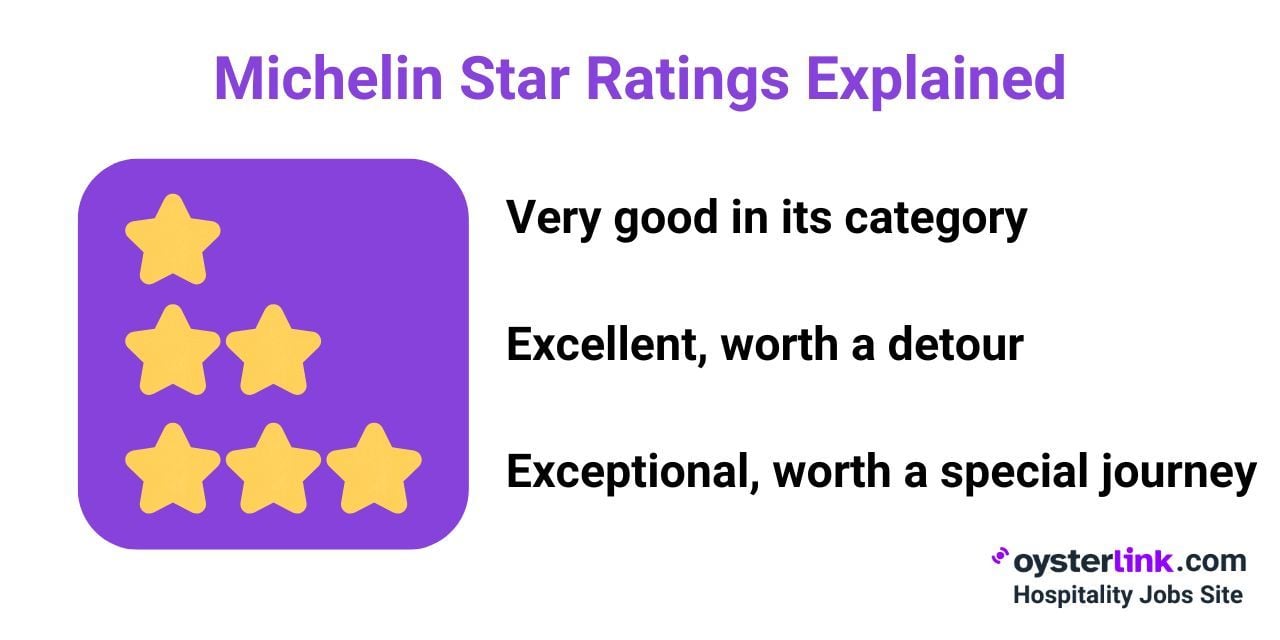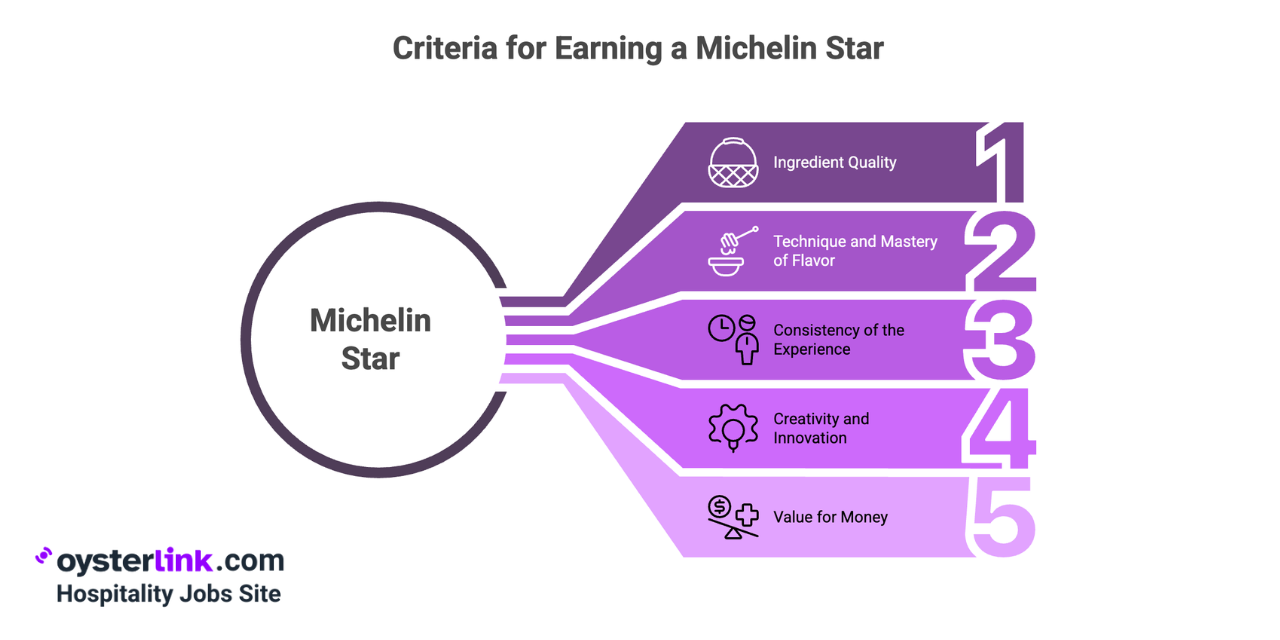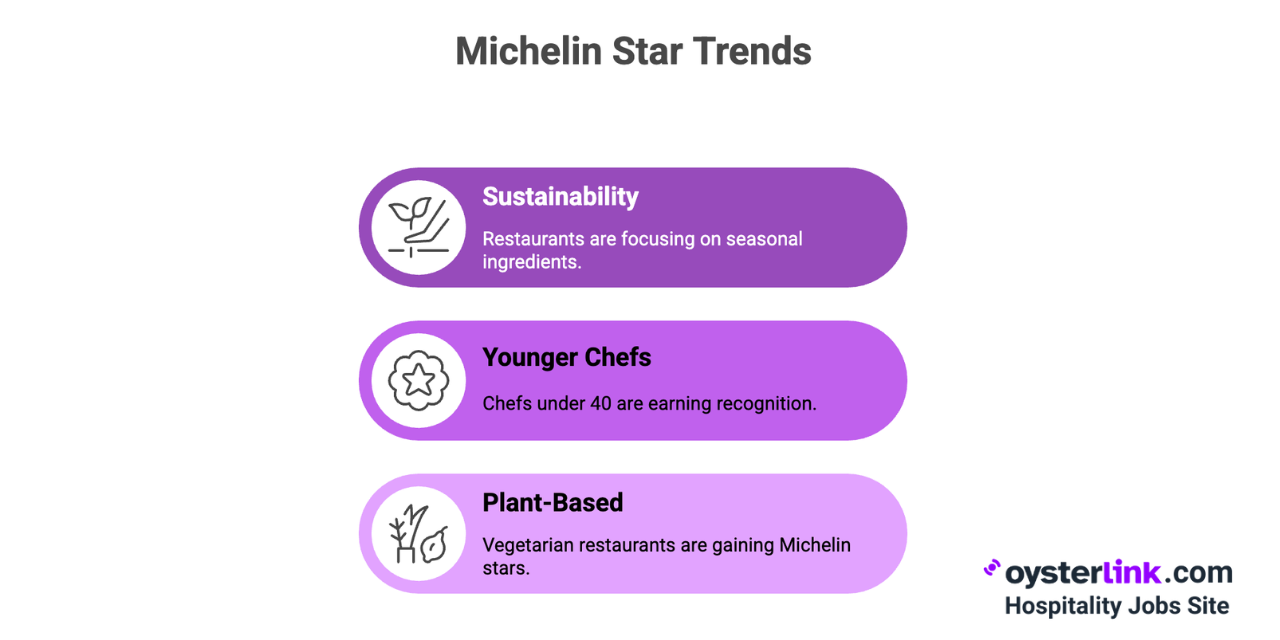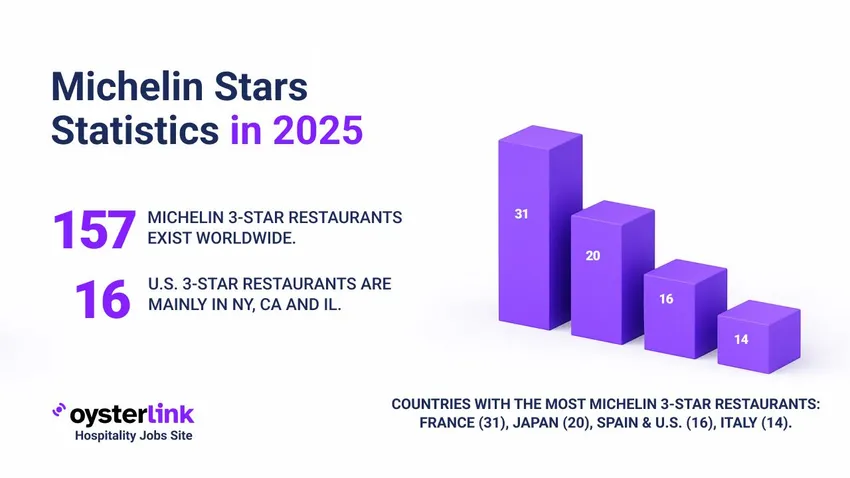Michelin Stars Statistics: Key Takeaways
- As of August 2025, there are 157 Michelin 3-star restaurants worldwide.
- France and Japan continue to lead in 3-star establishments, with 31 and 20 respectively.
- The United States holds 16 Michelin 3-star restaurants.
The Michelin star is one of the most prestigious awards in the culinary world. This article explores the latest Michelin stars statistics, focusing on 2025 data and offering key insights into where the stars are, how they’re awarded and what they mean for the global food scene.
What Are Michelin Stars?
Michelin stars are prestigious ratings awarded to restaurants that meet the Michelin Guide’s strict culinary standards.
A star rating reflects not only the quality of a restaurant's food but also its overall consistency, originality and technique.
Restaurants can receive one, two or three stars based on the level of excellence:
- 1 Star: A very good restaurant in its category
- 2 Stars: Excellent cooking worth a detour
- 3 Stars: Exceptional cuisine worth a special journey

The Michelin Guide employs anonymous inspectors who dine unannounced and assess restaurants using five specific criteria:
- Quality of the ingredients
- Mastery of cooking techniques
- Harmony of flavors
- Consistency of the dining experience
- The Chef's personality expressed through the cuisine
These elements are evaluated collectively to determine whether a restaurant meets the high standards for a Michelin star.
Unlike other ratings, Michelin does not consider service or ambiance when awarding stars, which ensures the focus remains on the food and the Chef’s culinary vision.
History of Michelin Stars
The Michelin Guide began in 1900 as a free booklet by the tire company, offering motorists maps, repair tips, and listings of restaurants and accommodations.
It wasn’t until 1926 that the guide started awarding stars to fine dining establishments — at first just one star. In 1931, the full three-star system was introduced, which set a new benchmark for culinary excellence.
Over time, Michelin stars became one of the most prestigious honors in the restaurant industry. As the guide expanded beyond France to over 40 countries and regions, a star came to signify not just elite technique, but consistency, flavor, value, and innovation.
Here’s a YouTube video that walks through the Michelin Guide’s journey
How Michelin Stars Are Awarded
Michelin stars are awarded by full-time, anonymous inspectors employed by the Michelin Guide. Each inspector visits a restaurant multiple times before making a recommendation. Restaurants are never informed about inspection dates, and the process is rigorous and standardized.
Criteria include:
- Ingredient quality
- Technique and mastery of flavor
- Consistency of the experience
- Creativity and innovation
- Value for money

Contrary to popular belief, service and decor are not part of the star evaluation — though they are considered for Michelin’s Bib Gourmand and Plate distinctions.
Global Michelin Star Statistics in 2025
In 2025, the number of Michelin-starred restaurants has grown steadily due to the guide’s expansion into new territories. According to Michelin’s latest data:
- 3-Star restaurants: 150+ worldwide
- 2-Star restaurants: 500+
- 1-Star restaurants: 3,000+
The concentration of 3-star restaurants remains highest in France, Japan and Spain. As of the 2025 guide update, these countries lead the world in 3-star Michelin restaurants:
Country/Territory | Number of 3-Star Michelin restaurants |
| France | 31 |
| Japan | 20 |
| Spain | 16 |
| United States | 16 |
| Italy | 14 |
| Germany | 12 |
| United Kingdom | 10 |
| Hong Kong and Macau | 9 |
| Switzerland | 4 |
| China Mainland | 3 |
| Taiwan | 3 |
| Singapore | 3 |
| Denmark | 3 |
| Austria | 2 |
| Belgium | 2 |
| Norway | 2 |
| Netherlands | 1 |
| Slovenia | 1 |
| South Korea | 1 |
| Sweden | 1 |
| Thailand | 1 |
Michelin Stars in the United States
As of 2025, there are 16 Michelin 3-star restaurants in the United States, located in New York, California and Washington D.C., according to the Michelin Guide.
The current 3-starred restaurants include:
- Atelier Crenn – San Francisco, California
- Benu – San Francisco, California
- Providence – Los Angeles, California
- Eleven Madison Park – New York City
- Le Bernardin – New York City
- Alinea – Chicago, Illinois
- Masa – New York City
- The French Laundry – Yountville, California
- The Inn at Little Washington – Washington, D.C.
- Per Se – New York City
- Quince – San Francisco, California
- SingleThread – Healdsburg, California
- Smyth – Chicago, Illinois
- Addison – San Diego, California
- Jungsik – New York City
- Somni – Los Angeles, California
These restaurants represent a blend of classic French technique, modern American innovation and international influence.
California continues to dominate the list with a strong concentration in the Bay Area and Napa Valley, while New York City holds the largest number of 3-star venues in a single U.S. city.
Le Bernardin holds one of the longest-running three-star streaks in the country — a distinction earned under the leadership of Chef Eric Ripert.
Michelin’s Expansion and Coverage in 2025
In recent years, the Michelin Guide has expanded into more destinations, including:
- Thailand
- Mexico
- Brazil
- Slovenia
- Turkey
- South Korea
This global expansion reflects both a growing interest in diverse culinary traditions and a strategic move by Michelin to reach new dining audiences.
Trends in Michelin Star Awards (2024–2025)
Several trends have emerged in the latest guide editions:
- Sustainability focus: Many new stars were awarded to restaurants emphasizing seasonal sourcing and low-waste practices.
- Younger Chefs rising: A new wave of Chefs under 40 are gaining stars, especially in Asia and Europe.
- Plant-based recognition: A few vegetarian and vegan restaurants received their first or second stars.

These shifts show that Michelin is adapting to cultural and environmental priorities while maintaining its high standards.
Controversies and Criticisms of the Michelin System
While Michelin stars are revered, the system is not without criticism:
- Lack of transparency: The inspection process remains secretive.
- Bias toward French cuisine and fine dining: Critics argue Michelin has historically favored traditional French techniques and upscale dining formats.
- Pressure on chefs: The pursuit of stars has been linked to stress, burnout and mental health issues in the industry.
In this TikTok, DeanBosko underscores how Michelin’s emphasis on French culinary standards and exclusive fine dining contributes to long-standing perceptions of bias in the system.
Michelin has made efforts to address some of these concerns, but the debate around inclusivity and fairness in modern dining continues.
Final Thoughts on Michelin Star Restaurants in 2025
Michelin stars remain one of the most respected honors in the culinary world.
With 157 three-star restaurants worldwide, the guide reflects both the legacy of fine dining and the evolving tastes of modern guests.
For Chefs, earning a Michelin star is a milestone that signals dedication to quality, precision and creativity.
For diners, Michelin-starred restaurants offer a curated experience rooted in culinary mastery.
Whether you're analyzing restaurant Michelin stars statistics to follow global trends or simply curious about where to dine next, the data tells a clear story: Innovation, consistency and excellence are still at the heart of every star awarded.









Loading comments...